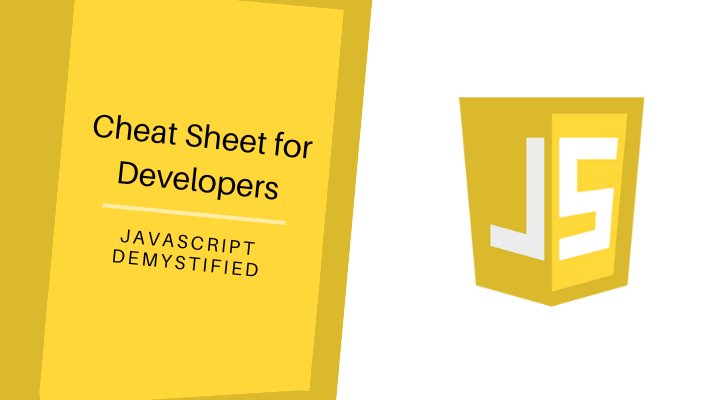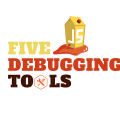JavaScript Demystified: Cheat Sheet for Developers
In the world of front-end development, JavaScript reigns supreme as the go-to language for creating dynamic and interactive web applications. Whether you’re a seasoned developer or just starting your journey in the coding realm, having a reliable cheat sheet at your fingertips can be a game-changer. JavaScript might seem complex at first glance, but fear not – this cheat sheet is here to demystify the language and provide you with a handy reference guide to boost your productivity and streamline your coding process.
Unveiling the Power of JavaScript
JavaScript, often abbreviated as JS, is a versatile and powerful programming language primarily used for front-end web development. It allows developers to breathe life into static web pages by adding interactivity, animations, and real-time updates. But JavaScript doesn’t stop at the browser; it has also found its way into server-side scripting through technologies like Node.js. This cheat sheet aims to uncover the core concepts and syntax of JavaScript, making it accessible and comprehensible for developers of all skill levels.
Mastering the Basics: Data Types and Variables
| Code | Description |
| let x = 10; | Declare a variable named ‘x’ with a value of 10 |
| const name = “John”; | Declare a constant variable named ‘name’ |
| var isActive = true; | Declare a variable using the ‘var’ keyword |
| let fruits = []; | Declare an array named ‘fruits’ |
At the heart of JavaScript lies its data types and variables. Understanding these foundational concepts is crucial to writing effective code. JavaScript offers various data types, including numbers, strings, booleans, objects, arrays, and more. Variables, declared using keywords like let, const, and var, allow you to store and manipulate data. While let and const provide block-scoped variables, var offers function-scoped variables.
Navigating Control Flow: Conditionals and Loops
| Code | Description |
| if (temperature > 30) { | Execute code if temperature is above 30 degrees |
| } else if (temperature <= 30) { | Execute alternative code if temperature is 30 or below |
| for (let i = 0; i < 5; i++) { | Iterate a block of code with ‘i’ ranging from 0 to 4 |
| while (count < 10) { | Execute code while count is less than 10 |
| do { | Execute code at least once, then continue if condition |
| } while (userInput !== “exit”); | Continue the loop while the condition is true |
Control flow mechanisms in JavaScript empower developers to dictate how their code behaves under different circumstances. Conditionals, such as if, else if, and switch, enable you to make decisions based on specific conditions. Loops, including for, while, and do...while, facilitate repetitive tasks by iterating over code blocks until a certain condition is met. These constructs are essential for creating dynamic and interactive applications.
Functions: Modular and Reusable Code
| Code | Description |
| function greet(name) { | Define a function named ‘greet’ with a ‘name’ parameter |
| return “Hello, ” + name + “!”; | Return a personalized greeting using the ‘name’ parameter |
| const result = greet(“Alice”); | Call the ‘greet’ function and store the result |
| const sum = (a, b) => a + b; | Declare a concise arrow function for addition |
| setTimeout(() => console.log(“Done”), 1000); | Execute code after a 1000ms delay using arrow function |
Functions act as the building blocks of JavaScript applications, allowing developers to encapsulate a set of instructions into a reusable unit. Parameters enable functions to accept input, while the return statement outputs results. The advent of arrow functions introduced a concise syntax for writing functions, making code more compact and readable. Moreover, asynchronous operations can be managed using callbacks, promises, and async/await, ensuring smooth execution and preventing blocking operations.
Object-Oriented JavaScript: Objects and Classes
| Code | Description |
| const person = { | Create an object named ‘person’ |
| name: “John”, | Assign properties like ‘name’ to the ‘person’ object |
| age: 30, | Define a method ‘greet’ within the ‘person’ object |
| greet: function() { return “Hi there!”; } | Declare a concise arrow function for addition |
| }; | Conclude the object declaration |
| class Circle { | Declare a class named ‘Circle’ |
| constructor(radius) { | Constructor to initialize ‘radius’ property |
| this.radius = radius; | Assign ‘radius’ property within the class |
| getArea() { | Define a method to calculate the circle’s area |
| return Math.PI * this.radius ** 2; | Perform area calculation based on ‘radius’ |
| } | Conclude the class definition |
JavaScript’s object-oriented capabilities provide a structured and organized way to manage complex codebases. Objects serve as containers for related data and behavior, with properties holding values and methods executing functions. The introduction of classes in ES6 formalized object-oriented programming, allowing developers to create blueprints for objects. Constructors initialize object properties, and methods encapsulate behavior. This approach promotes modularity, making code more maintainable and extensible.
Conclusion: Your Take on JavaScript’s Demystification
Congratulations! You’ve embarked on a journey to demystify JavaScript through this cheat sheet. As you navigate the realms of data types, control flow, functions, and object-oriented programming, you’re equipped with the tools to build captivating web applications that captivate users and deliver immersive experiences.
Happy coding, and may your JavaScript endeavors be both enlightening and rewarding!





